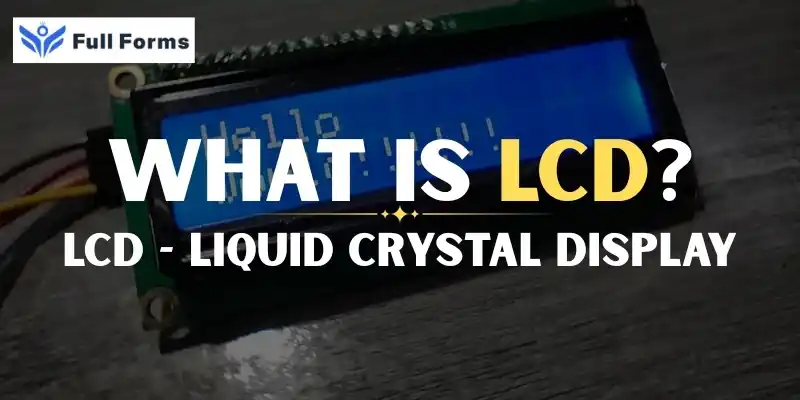Liquid Crystal Display
(LCD)

Description
What is an LCD, or Liquid Crystal Display?
You are probably reading this on a screen, so look around you. It could be a tablet, a phone, a laptop, or a TV. The majority of these screens utilize a prevalent technology known as LCD, which signifies Liquid Crystal Display.
But what is LCD, really? How does it work? Why does it happen so often? We'll talk about these questions in this article using simple language that everyone can understand.
What Does LCD Stand For?
Liquid Crystal Display is what LCD stands for. It's a kind of flat-screen display that many devices, like TVs, computer monitors, digital clocks, calculators, and smartphones, use.
Liquid crystals are a special kind of material that don't act like a solid or a liquid. They are in between the two. These crystals can change the way light hits the screen to make pictures or numbers.
A Little Bit of History
The 1970s saw the rise of LCD technology. It was used to show numbers on early digital watches and calculators. LCDs got better over time, becoming less expensive, lighter, and using less energy. By the early 2000s, LCD screens were starting to take the place of older, heavier CRT (Cathode Ray Tube) monitors and TVs.
How Does LCD Work?
Backlight: An LCD screen needs a light source behind it, which is usually a white LED. LCDs don't make light on their own, like OLEDs do. Instead, they control how much light gets through.
Liquid Crystals: These are tiny pieces of material that are put between two layers of glass. They change shape and control the light when electricity flows through them.
Color Filters: The screen is made up of tiny dots. There are three sub-pixels in each pixel: Red, Green, and Blue (RGB). The display can make millions of colors by changing the amount of light that goes through each sub-pixel.
Image Display: The brain of the device (like the processor in your phone) tells each pixel how much color and light to show. This makes pictures, videos, or text show up on the screen.
What Makes LCDs So Popular?
- Thin and light: great for modern flat screens.
- Uses less power than older types of displays.
- Affordable: lower cost for consumers.
- Sharp Images: Can show text and graphics in high resolution.
- No Screen Burn-in: Unlike OLEDs.
What People Usually Use LCDs For
- Phones and tablets
- Laptops and desktop monitors
- TV screens
- Digital watches and clocks
- Car dashboards
- Cameras and camcorders
- Microwaves, washing machines, and more
Different Kinds of LCD Screens
TN (Twisted Nematic): The oldest and simplest kind. Fast and cheap but with poor color and viewing angles.
IPS (In-Plane Switching): Better colors and wider viewing angles. More expensive, commonly used in smartphones and monitors.
VA (Vertical Alignment): Good contrast and colors but slower response time. Used in some TVs and monitors.
Are LCD and LED Different?
A lot of people ask if LCD and LED are the same. The answer is: not exactly.
LCD is the display technology. LED refers to the backlight. So, an "LED TV" is actually an LCD TV that uses LED lights for the backlight, making it brighter and more energy-efficient than older LCDs that used CCFL lights.
Restrictions of LCD
- Cheaper models may have narrow viewing angles.
- Blacks appear more like dark gray due to light leakage.
- Slower response times for fast motion (gaming, etc.).
- Requires a backlight, unlike OLED which is self-lit.
What Will Happen to LCD in the Future?
LCD is still widely used even though OLED and MicroLED are growing. It continues to evolve with better resolutions (Full HD, 4K, 8K) and improved panel designs.
For everyday use, LCD remains a reliable and affordable option.
Final Thoughts
One of the most important technologies in modern electronics is the Liquid Crystal Display (LCD). We can see and use devices when we watch a movie, read an email, or check the time.
It is cheap, saves energy, and is all around us. This makes it one of the most successful and long-lasting display technologies ever.
